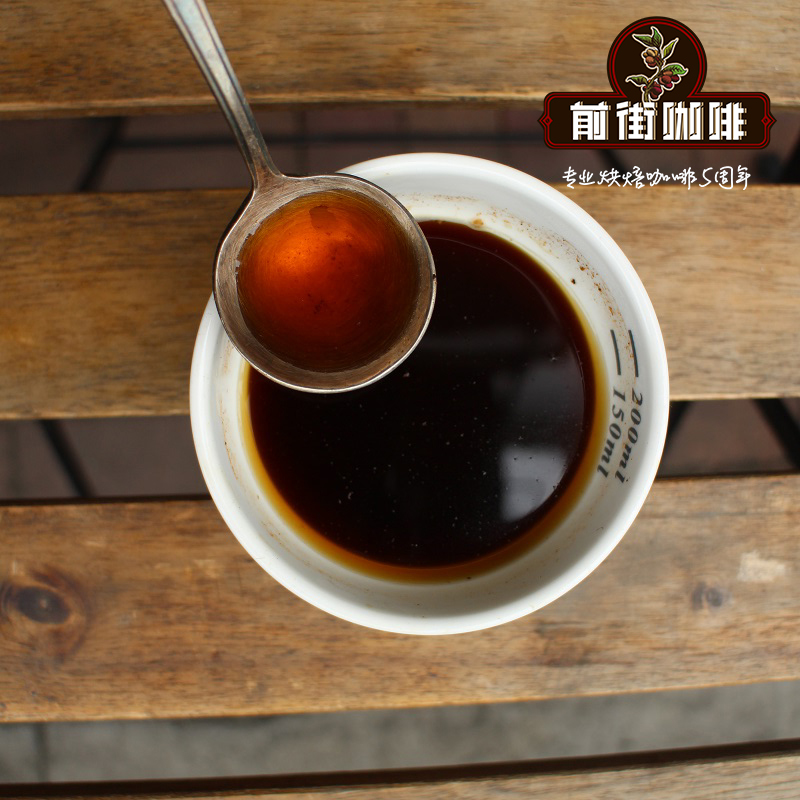What are the characteristics of Kenyan French missionary coffee? French missionary coffee flavor and taste

Professional coffee knowledge exchange more coffee bean information please follow the coffee workshop (Wechat official account cafe_style)
Coffee is native to Ethiopia. Around 1850, French missionaries brought coffee to Kenya via the colonial island of Bourbon (where it was planted) and took root there. Most of the varieties cultivated in Kenya are improved by SL. Native coffee is quite rare.
Kenya is one of the birthplaces of mankind, and fossilized human skulls from about 2.5 million years ago have even been unearthed in Kenya. From 1890 to 1963, it was under British colonial rule for about 70 years.
There is no way to examine the source of coffee. One of the many legends refers to the highlands of KAFFA province in southwestern Ethiopia. It is said that a shepherd became very excited and lively when he discovered that sheep had eaten a plant more than a thousand years ago, so he discovered coffee. It is also said that due to a wildfire, a coffee forest was destroyed and the smell of barbecue coffee attracted the attention of the surrounding residents. People first chewed the fruit of this plant to refresh themselves, then baked and ground it and mixed it with flour to make bread, which was used as food for warriors to improve their courage to fight. However, these legends are lack of historical documents, only appear in later travel biographies, it is impossible to study the real origin of coffee.
It was not until around the 11th century that people began to use boiled coffee as a drink. In the 13th century, Ethiopian troops invaded Yemen and brought coffee to the Arab world. Because the Islamic doctrine forbids people to drink alcohol, some religious people think that this kind of drink stimulates the nerves and violates the doctrine. Coffee shops were banned and closed for a time, but the Egyptian sultan thought that coffee was not against the doctrine, so the ban was lifted. Coffee drinks quickly became popular in the Arab region. The word coffee Coffee, which comes from the Arabic Qahwa, which means "plant drink", later spread to Turkey and became the source of the word in European languages. The method of growing and making coffee has also been continuously improved and perfected by the Arabs.
However, before the 15th century, coffee had long been monopolized by the Arab world and spread only among Muslim countries; at that time, it was mainly used in medicine and religion. Muslim doctors and monks admit that coffee has the functions of refreshing, brain-awakening, stomach-strengthening, body-building and hemostasis; the use of coffee has been documented since the beginning of the 15th century and integrated into religious ceremonies during this period. At the same time, it also appeared in the folk as a daily drink. Because alcohol was strictly prohibited in the Muslim world, coffee became a very important social drink at that time. Until the 16th and 17th centuries, coffee was introduced into Europe through the merchants of Venice and the Dutch hegemony of the sea. soon, this black drink, which was full of oriental mystery and rich aroma, was competed by the aristocratic gentry class. the price of coffee also rose with the tide, and even produced the title of "black gold", and in the following era of great navigation, through the spread of shipping. The whole world has been included in the production and consumption of coffee.
Kenya (Kenya) is located in eastern Africa, adjacent to Ethiopia, the "source of coffee". Despite the fertile soil, coffee was first grown in the country when Bourbon (also known as French mission, to commemorate the introduction of French missionaries) was introduced from Brazil in 1893; like the story of "go left, go right", coffee did not move inland to the south but to the Red Sea. After hundreds of years of spread, after settling down and mutating all over the world, he returned to his hometown, the Great Rift Valley (The Great Rift Valley).
As a British colony, it is only natural that the benefits of exporting coffee are skewed towards the sovereign state. Until 1954, Kenyans owned only 5000 acres of arable land, most of which were controlled by the British and sent to London for auction. Although the colony seems to have been exploited, without the British laboratory Scott Laboratories, Kenyan coffee would not have been what it is today. Because its representative varieties SL-28 and SL-34 are two of the 40 kinds of coffee grown in the laboratory that year. At present, the popular varieties in Kenya include Ruiri 11 with high disease resistance but slightly lower taste, and Batian, K7 and Kent with high drought resistance.
The Maomao uprising (Mau Mau Uprising), which took place in 1956-60, returned most of the control of cultivated land to indigenous people. Coffee farms are mostly small-scale operations with an annual output of hundreds of kilograms. They will decide to sell the fruit to the nearby processing plant (Coffee Factory) according to the delivery distance and the purchase price. The famous Karagoto Coffee, for example, is actually a processing plant around the town of Karatina. After collecting the coffee fruits of nearby farmers, they will be processed and exported. It will also provide farmers with technical support for planting. Karagoto itself, on the other hand, combines Tegu and Ngunguru processing plants to form a Tekangu Farmers Cooperative Society,FCS. Most of the famous producing areas in Kenya are concentrated in the central part, such as Nyeri, Kiambu, Kirinyaga and the western mountains near Uganda (Nakuru, Bungoma, Kitale, etc.).
Kenyan French missionaries. Coffee is native to Ethiopia. Around 1850, French missionaries brought coffee to Kenya via the colonial island of Bourbon (where it was planted) and took root there. Most of the varieties cultivated in Kenya are improved by SL. Native coffee is quite rare.
[Haniyeh] of the front street coffee is Bourbon, a French missionary from Kenya. The traditional sun treatment meets the traditional variety of coffee, which is a pleasant surprise.
The varieties of bourbon of French missionaries treated by sun are dense and rich. In addition to the thick chocolate finish, it also has obvious sun fruit flavor and the thick mellowness of coffee.
The Harris family has been growing coffee in the Thika region for more than 100 years and is well aware of the unique red volcanic soil here, coupled with the right coffee growth temperature and rainfall, these excellent growing conditions give Chania Manor the unique flavor of French missionaries.
Qianjie French missionary bourbon cooking parameters suggested:
V60B 90 degrees water temperature / 1V 15 / time two minutes
Flavor:
Sweet with good citrus aromas. Steady with a touch of light, tropical fruit aromas like grapefruit. In the balance, there is a touch of wildness.
Important Notice :
前街咖啡 FrontStreet Coffee has moved to new addredd:
FrontStreet Coffee Address: 315,Donghua East Road,GuangZhou
Tel:020 38364473
- Prev

What is French missionary Bourbon Kenya French missionary coffee? Characteristics of French missionaries
Professional coffee knowledge exchange more information about coffee beans Please follow the coffee workshop (Wechat official account cafe_style) Coffee originated in Ethiopia. Around 1850, French missionaries brought coffee to Kenya via the colonial island of Bourbon (where it was planted) and took root there. Most of the varieties cultivated in Kenya are improved by SL. Native species
- Next

What are the characteristics of African coffee beans? how to make African coffee? the story of African coffee producing areas
Professional coffee knowledge exchange more coffee bean information please follow the coffee workshop (Wechat official account cafe_style) Why do African coffee beans have berry aroma? Do you pay attention to the type or origin of coffee beans when you drink coffee? Although there are many factors that affect the flavor of coffee, such as the baking degree of beans, the grinding fineness of coffee powder, the brewing temperature and so on, they are stacked layer by layer.
Related
- Detailed explanation of Jadeite planting Land in Panamanian Jadeite Manor introduction to the grading system of Jadeite competitive bidding, Red bid, Green bid and Rose Summer
- Story of Coffee planting in Brenka region of Costa Rica Stonehenge Manor anaerobic heavy honey treatment of flavor mouth
- What's on the barrel of Blue Mountain Coffee beans?
- Can American coffee also pull flowers? How to use hot American style to pull out a good-looking pattern?
- Can you make a cold extract with coffee beans? What is the right proportion for cold-extracted coffee formula?
- Indonesian PWN Gold Mandrine Coffee Origin Features Flavor How to Chong? Mandolin coffee is American.
- A brief introduction to the flavor characteristics of Brazilian yellow bourbon coffee beans
- What is the effect of different water quality on the flavor of cold-extracted coffee? What kind of water is best for brewing coffee?
- Why do you think of Rose Summer whenever you mention Panamanian coffee?
- Introduction to the characteristics of authentic blue mountain coffee bean producing areas? What is the CIB Coffee Authority in Jamaica?

